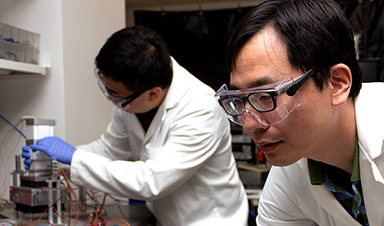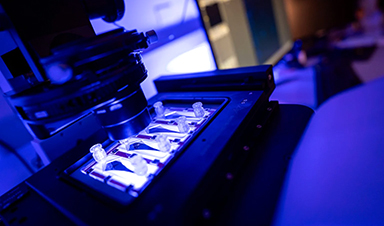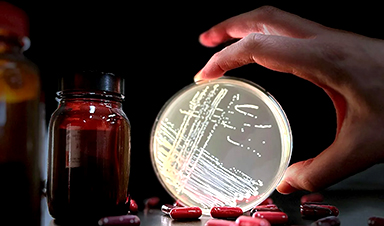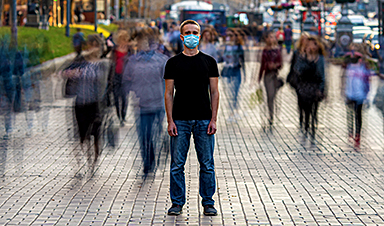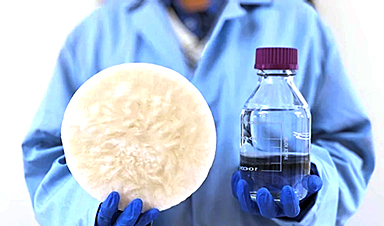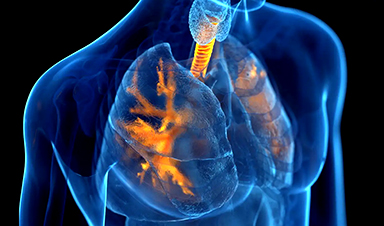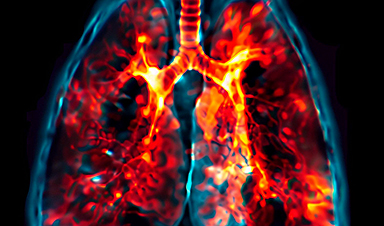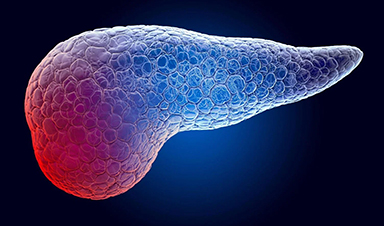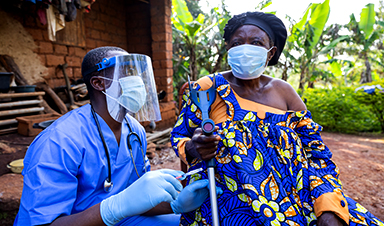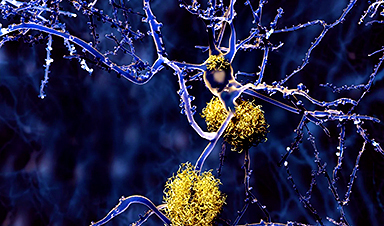As devices get smaller and more powerful, the risk of them overheating and burning out increases substantially. Despite advancements in cooling solutions, the interface between an electronic chip and its cooling system has remained a barrier for thermal transport due to the materials’ intrinsic roughness.
| Sheng Shen, a professor of mechanical engineering Opens in new window, has fabricated a flexible, powerful, and highly-reliable material to efficiently fill the gap (ACS Nano, “3D Graphene-Nanowire “Sandwich” Thermal Interface with Ultralow Resistance and Stiffness”). | |
| “At first glance, our solution looks like any ordinary copper film, but under a microscope the novelty of our material becomes clear,” explained Lin Jing, Ph.D. student. | |
| The material, composed of two thin copper films with a graphene-coated copper nanowire array sandwiched between them, is extremely user-friendly. | |
| “Other nanowires need to be in-situ grown where the heat is designed to be dissipated, so that their application threshold and cost is high,” said Rui Cheng, postdoctoral researcher in Shen’s lab. “Our film isn’t dependent on any substrate; it is a free-standing film that can be cut to any size or shape to fill the gap between various electrical components.” | |
| The “sandwich” builds out of Shen’s “supersolder,” a thermal interface material (TIM) that can be used similarly as conventional solders, but with twice the thermal conductance of current state-of-the-art TIMs. |
| By coating the “supersolder” in graphene, Shen’s team enhanced its thermal transport capabilities and prevented the risk of oxidation, ensuring a longer service life. The “sandwich,” compared to the thermal pastes/adhesives currently on the market, can reduce thermal resistance by more than 90% when considering the same thickness. | |
| Thanks to its ultra-high mechanical flexibility, the “sandwich” can enable a wide range of applications in flexible electronics and microelectronics, including flexible LEDs and lasers for lighting and display, wearable sensors for communication, implantable electronics for monitoring health and imaging, and soft robotics. | |
| Moving forward, Shen’s team will explore ways to scale the material at an industrial level and lower its cost, while continuing to seek ways to improve it. | |
| “We are very excited about this material’s potential,” Shen shared. “We believe that a wide variety of electronic systems can benefit from it by allowing them to operate at a lower temperature with higher performance.” |
News
Baffling Scientists for Centuries: New Study Unravels Mystery of Static Electricity
ISTA physicists demonstrate that contact electrification depends on the contact history of materials. For centuries, static electricity has intrigued and perplexed scientists. Now, researchers from the Waitukaitis group at the Institute of Science and [...]
Tumor “Stickiness” – Scientists Develop Potential New Way To Predict Cancer’s Spread
UC San Diego researchers have developed a device that predicts breast cancer aggressiveness by measuring tumor cell adhesion. Weakly adherent cells indicate a higher risk of metastasis, especially in early-stage DCIS. This innovation could [...]
Scientists Just Watched Atoms Move for the First Time Using AI
Scientists have developed a groundbreaking AI-driven technique that reveals the hidden movements of nanoparticles, essential in materials science, pharmaceuticals, and electronics. By integrating artificial intelligence with electron microscopy, researchers can now visualize atomic-level changes that were [...]
Scientists Sound Alarm: “Safe” Antibiotic Has Led to an Almost Untreatable Superbug
A recent study reveals that an antibiotic used for liver disease patients may increase their risk of contracting a dangerous superbug. An international team of researchers has discovered that rifaximin, a commonly prescribed antibiotic [...]
Scientists Discover Natural Compound That Stops Cancer Progression
A discovery led by OHSU was made possible by years of study conducted by University of Portland undergraduates. Scientists have discovered a natural compound that can halt a key process involved in the progression [...]
Scientists Just Discovered an RNA That Repairs DNA Damage – And It’s a Game-Changer
Our DNA is constantly under threat — from cell division errors to external factors like sunlight and smoking. Fortunately, cells have intricate repair mechanisms to counteract this damage. Scientists have uncovered a surprising role played by [...]
What Scientists Just Discovered About COVID-19’s Hidden Death Toll
COVID-19 didn’t just claim lives directly—it reshaped mortality patterns worldwide. A major international study found that life expectancy plummeted across most of the 24 analyzed countries, with additional deaths from cardiovascular disease, substance abuse, and mental [...]
Self-Propelled Nanoparticles Improve Immunotherapy for Non-Invasive Bladder Cancer
A study led by Pohang University of Science and Technology (POSTECH) and the Institute for Bioengineering of Catalonia (IBEC) in South Korea details the creation of urea-powered nanomotors that enhance immunotherapy for bladder cancer. The nanomotors [...]
Scientists Develop New System That Produces Drinking Water From Thin Air
UT Austin researchers have developed a biodegradable, biomass-based hydrogel that efficiently extracts drinkable water from the air, offering a scalable, sustainable solution for water access in off-grid communities, emergency relief, and agriculture. Discarded food [...]
AI Unveils Hidden Nanoparticles – A Breakthrough in Early Disease Detection
Deep Nanometry (DNM) is an innovative technique combining high-speed optical detection with AI-driven noise reduction, allowing researchers to find rare nanoparticles like extracellular vesicles (EVs). Since EVs play a role in disease detection, DNM [...]
Inhalable nanoparticles could help treat chronic lung disease
Nanoparticles designed to release antibiotics deep inside the lungs reduced inflammation and improved lung function in mice with symptoms of chronic obstructive pulmonary disease By Grace Wade Delivering medication to the lungs with inhalable nanoparticles [...]
New MRI Study Uncovers Hidden Lung Abnormalities in Children With Long COVID
Long COVID is more than just lingering symptoms—it may have a hidden biological basis that standard medical tests fail to detect. A groundbreaking study using advanced MRI technology has uncovered significant lung abnormalities in [...]
AI Struggles with Abstract Thought: Study Reveals GPT-4’s Limits
While GPT-4 performs well in structured reasoning tasks, a new study shows that its ability to adapt to variations is weak—suggesting AI still lacks true abstract understanding and flexibility in decision-making. Artificial Intelligence (AI), [...]
Turning Off Nerve Signals: Scientists Develop Promising New Pancreatic Cancer Treatment
Pancreatic cancer reprograms nerve cells to fuel its growth, but blocking these connections can shrink tumors and boost treatment effectiveness. Pancreatic cancer is closely linked to the nervous system, according to researchers from the [...]
New human antibody shows promise for Ebola virus treatment
New research led by scientists at La Jolla Institute for Immunology (LJI) reveals the workings of a human antibody called mAb 3A6, which may prove to be an important component for Ebola virus therapeutics. [...]
Early Alzheimer’s Detection Test – Years Before Symptoms Appear
A new biomarker test can detect early-stage tau protein clumping up to a decade before it appears on brain scans, improving early Alzheimer’s diagnosis. Unlike amyloid-beta, tau neurofibrillary tangles are directly linked to cognitive decline. Years [...]
